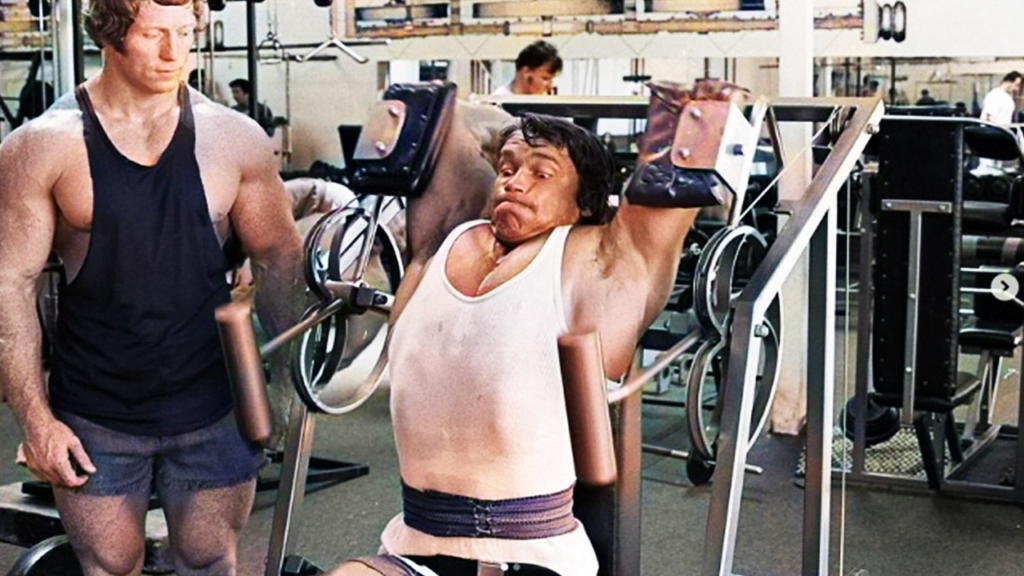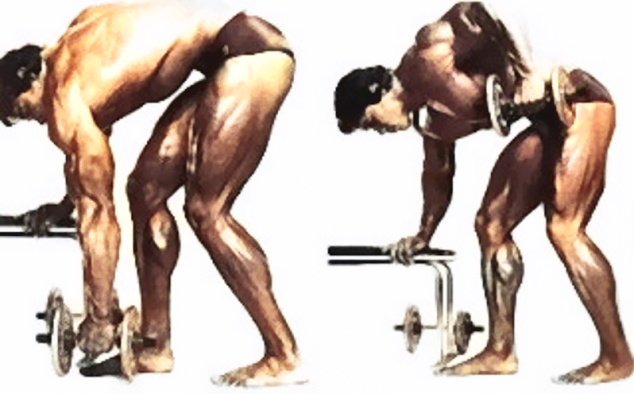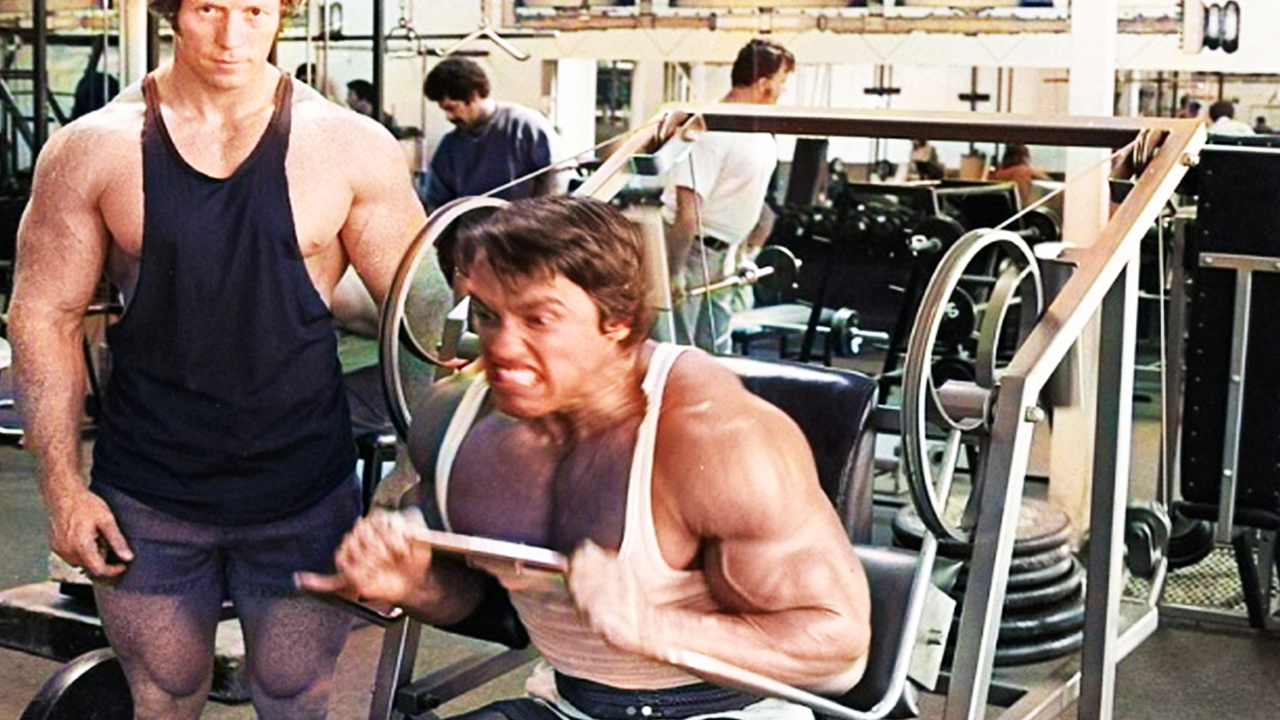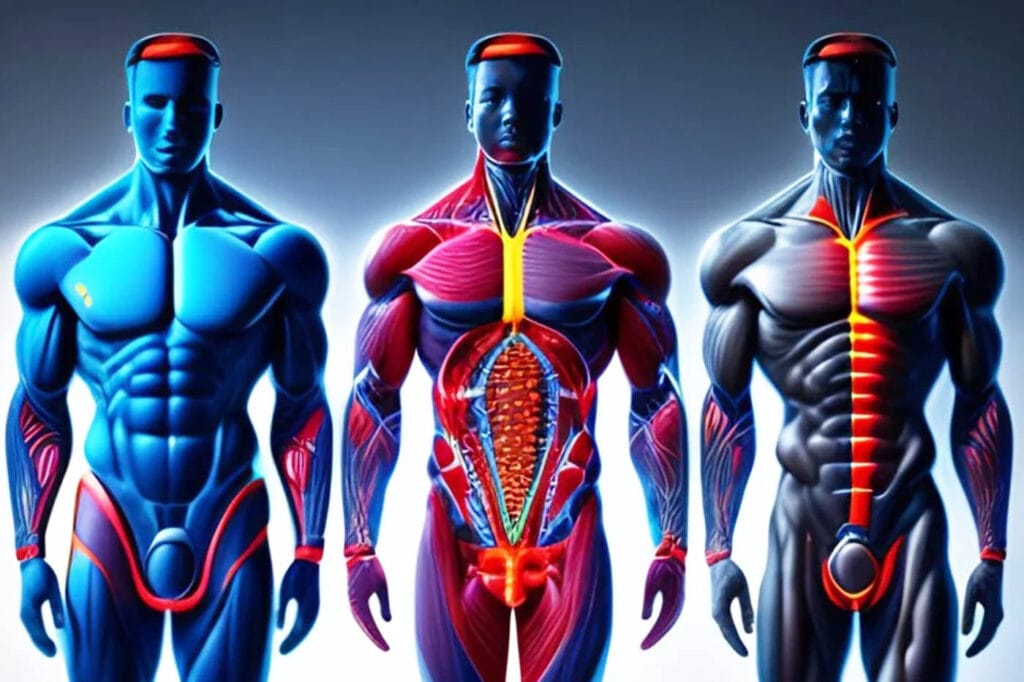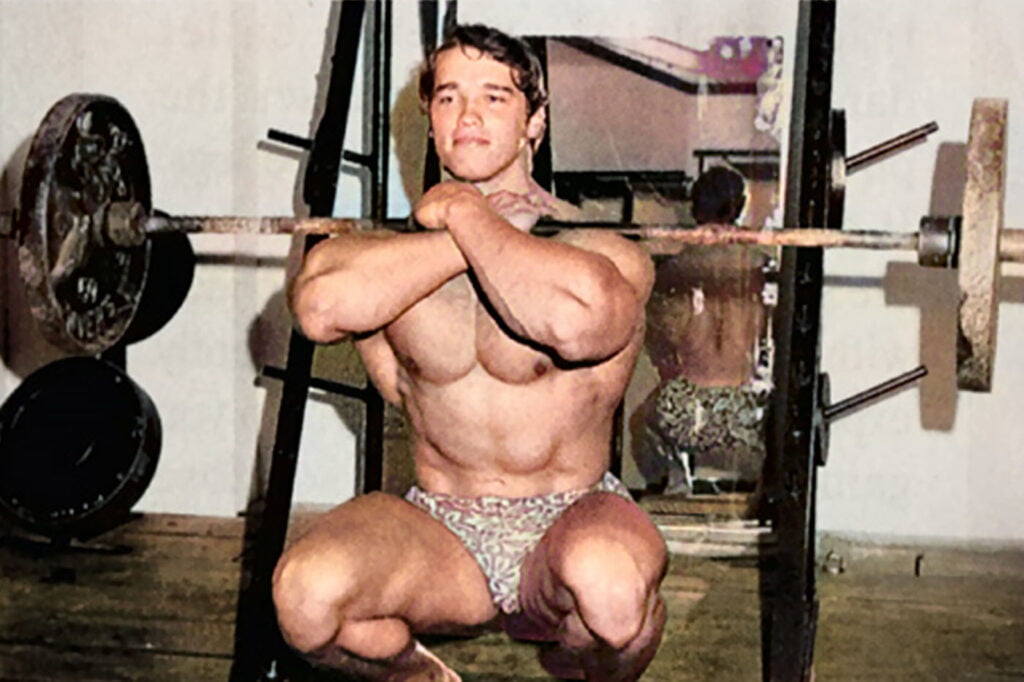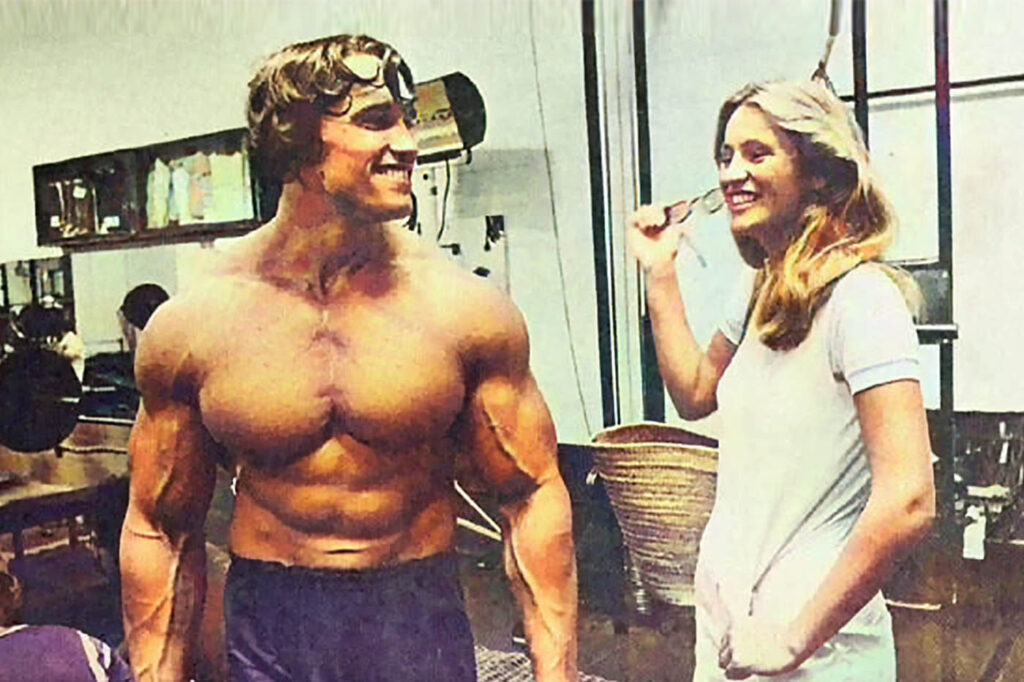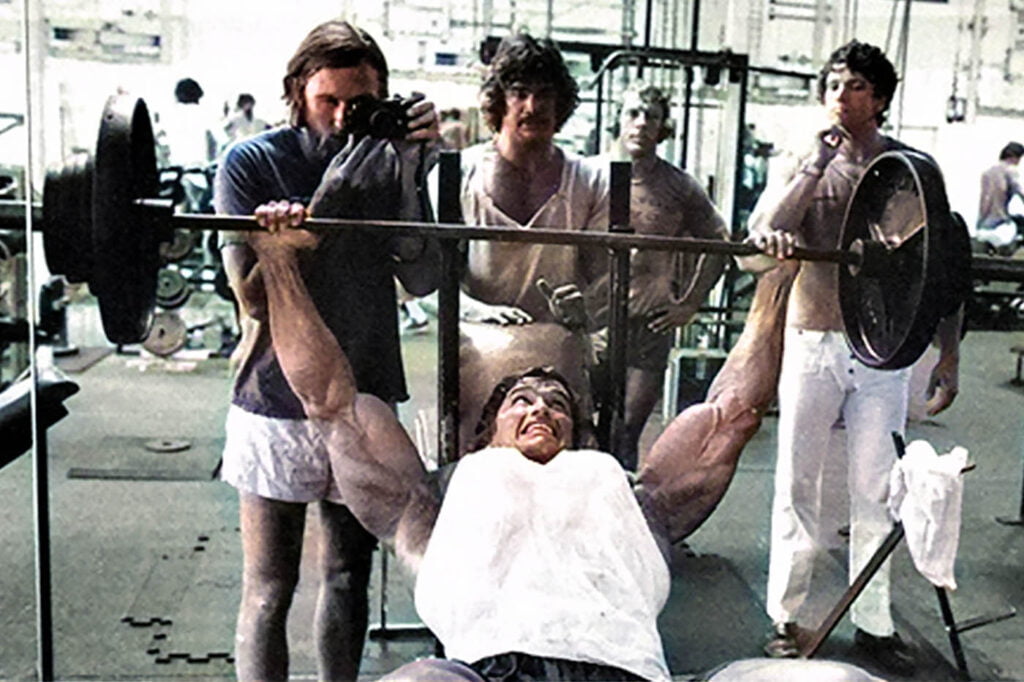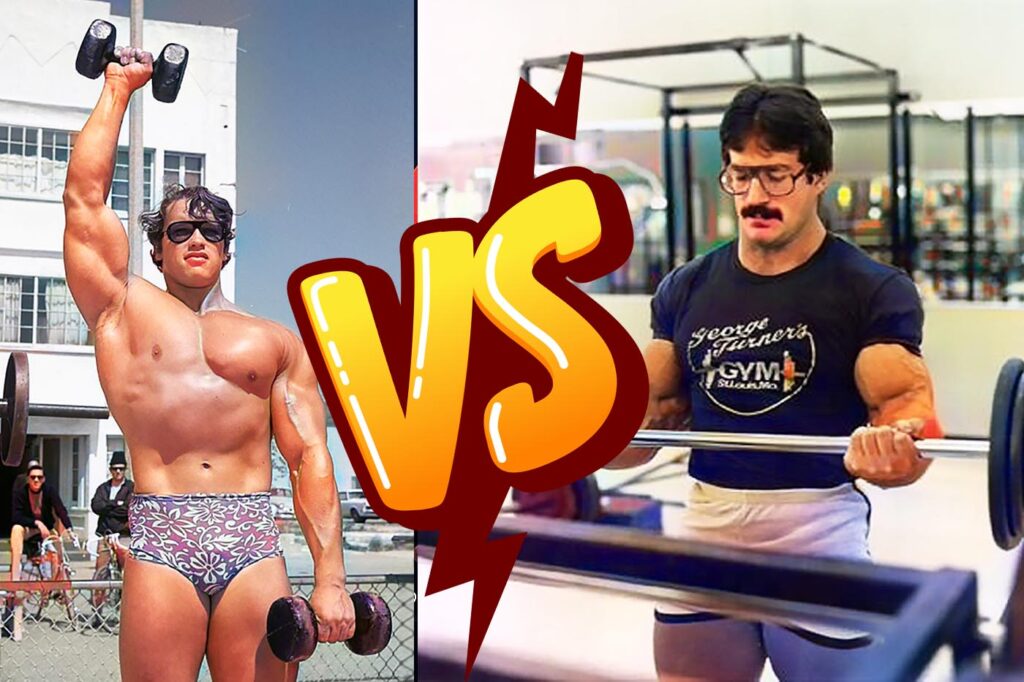Are you in search of a well-defined, muscular back like Arnold Schwarzenegger? You’ve found the right place. If you want to learn how to build muscle and strength, this is the book for you. In addition to contributing to a more balanced physique, having a strong back is critical for overall strength and power. No matter your fitness level, this comprehensive book will provide you with the knowledge and tools you need to develop a strong and toned back like Arnold.
Because the dorsal latissimus muscle and trapezius are the largest muscles in the upper body, developing one’s back to its full potential is an arduous task for anyone hoping to build a huge upper body. Almost a third of our bodies are devoted to the back. Ignoring or underdeveloping one’s back is, needless to say, no different from neglecting one’s legs when it comes to bodybuilding. Their inability to achieve optimal proportions and symmetry in their bodies is a result of their chronic lack of coordination.
Recall that a half-chest measurement of 50 inches represents back development. Even if your pecs are completely developed, you won’t be able to extend the tape above 50 inches if your back is small and your lats aren’t wide. Both the chest and the back are closely related. Arnold frequently favored superimposing these two bodyparts for that reason. An incredibly intricate structure is at the back. Numerous smaller muscle groups make up the back, in addition to larger ones like the trapezius, lats, and spinal erectors of the lower back. These include, among others, the teres major and minor, the rhomboids major and minor, the infraspinatus and supraspinatus, the longissimus dorsi and spinal dorsi, and the levator anguliscapulae. The list, however, is far from exhaustive. The back five are actually made up of multiple layers of muscle, and all of them need to be developed if you want to have real density and thickness.
A person’s back, second only to their legs, is where their strength resides. Legs and back muscles are able to lift a lot of weight. And so can the traps and the lats. It is impossible for a bodybuilder to squat high weights if their lower back is weak. Basic strength training moves like deadlifts, cleans, bent-over rows, T-bar rows, and overhead presses will also be out of his reach. Rather than being constrained by the power of his legs, arms, or shoulders, the bodybuilder will be restricted by the amount of weight that his lower back can take.
Any athlete can benefit greatly from a strong back, not only those who play football. A strong back and good lats will make you a stronger athlete, help you perform better, and reduce the risk of injuries. It doesn’t matter if you play football, basketball, baseball, bolleyball, soccer, or hockey; if you are a boxer, wrestler, golfer, tennis enthusiast, or mountain climber.
Best Back Exercises for Building Muscle by Arnold Schwarzenegger
Best Exercises Routine for The Beginner
1. Wide-Grip Chin Up – 3 Sets x As Many As Possible
2. Bent-Over Barbell Row – 3 Sets x 10/8/6 Reps
3. Deadlifts – 3 Sets x 10/8/6 Reps
To open up the rib cage and stretch the lats and serratus, you can do light pullovers after squats as a superset.
Complete Back Workout Routine for The Intermediate Level
Choose which need is greater—more width or more thickness—and add one more set of each exercise and one more lat exercise to the intermediate level.
1. Wide Grip Chin Up Exercise – 4 Sets x As Many As Possible
2. Bent-Over Barbell or Dumbbell Row – 3 Sets x 10/8/6 Reps
3. T-Bar Row – 3 Sets x 10/8/6 Reps
4. Lat Pulldown – 4 Sets x 12/10/8/15 Reps
5. Cross Bench Pullover – 3 Sets x 12-15 Reps
6. Deadlifts – 4 Sets x 10/8/6/6 Reps
Compound Supersets Back Muscle Workout to Build Muscle And Strength
A compound superset is two exercises for the same bodypart done without rest. Compound supersetting for the back is very grueling work. But it really brings out detail and muscularity. It is thus ideal for pre-contest training.
Don’t expect to use as much weight when doing compound supersets as you would normally. Your biceps will quickly become fatigued and congested, making the use of heavy weights temporarily impossible. Don’t worry. Train for a massive pump, deep ache, and burn. The weight used is of secondary importance in this kind of training.
Advanced Back Workout for Strength And Muscle
The more advanced bodybuilder should pick two lat exercises for width and two for thickness.
1. T-Bar Row – 6 Sets x 10/8/8/6/6/10 Reps
2. Seated Cable Row – 6 Sets x 10/8/8/6/6/10 Reps
3. Lat Pulldowns – 6 Sets x 12/10/8/8/8/15 Reps
4. Cross Bench Pullover – 3 x 12/8/15 Reps
You could switch up your exercises every once in a while to keep your body from getting used to one routine. Some examples are one-arm dumbbell rowing, one-arm cable rowing, close grip pulldowns, and straight-arm lat pulldowns. Train your back with the best back exercises given below.
Build Your Back with Arnold’s Compound Superset Exercise Routine
Superset 1:
1. Wide-Grip Chin Up – 4 Sets x As Many As Possible
2. Bent-Over Barbell Row – 5 Sets x 12/10/8/6/6 Reps
Superset 2:
1. Lat Pulldown to The Neck- 4 Sets x 10 Reps
2. T-Bar Row – 4 Sets x 12/10/8/6 Reps
Superset 3:
1. Close Grip Chin or Close Grip Lat Pulldown – 4 Times As Many As Possible
2. Seated Cable Row – 5 Sets x 10/10/8/6/15 Reps
Superset 4:
1. Cross Bench Dumbbell Pullover – 4 Sets x 12-15
2. Lat Stretches – 4 Sets x 12 Second Holds
Dominance with Dumbbells: Unlocking the Potential of Single-Arm Workouts
In the realm of strength training, single-arm dumbbell workouts often take a backseat to their two-armed counterparts. However, these seemingly simple exercises can provide a unique set of benefits that can help unlock your true potential. From improved muscle imbalances to increased core stability, exploring the world of dominance with dumbbells can elevate your fitness journey to new heights. Perform 3 to 4 sets this exercise.
Seated Cable Row: Back Isolation for Optimal Outcomes
Arnold liked to hold a triangle bar close and aligned to his body to get thicker in the middle back and lats. To begin, grab the bar with your forward stretch. Keep your knees bent. If you stretch your arms, the plates on the weight stack should not touch the foot brace. This can be done by moving the foot brace to the back. Pull your body forward with the weight until your chest is above your legs. Keep your lower back arched in a curved way at the same time. Don’t let it go around. Your lats should feel stretched. Sit up straight so that your body is straight across from the floor as you pull the bar in to your middle.
When the bar hits your abs, arch your chest and drop your shoulders. When your back is fully stretched out, your lower back should be arched, not bowed. A lot of people just pull the bar to their stomach and keep their chest flat and shoulders round. This style doesn’t work because the lats can’t tighten up this way.
Mastering the Wide-Grip Chin-Up: A Comprehensive Guide to Building Upper Body Strength
These chins work the entire back, shoulder girdle multiple muscle groups, which broadens the shoulders in addition to the lats and shoulder blades together. It is possible to stretch, spread apart, and widen the scapulae. One of the best exercises for expanding the shoulders, building the possibility of wider upper backs muscle growth, and flaring lats is the wide grip chin up.
When someone is at their strongest, In back day Arnold would advise starting their workout with wide grip chins up. If these are performed after pulldowns and rowing exercises, the person’s arms will be too tired to perform many sets and reps. If you believe you are too worn out to perform a lot of reps. Aim for 30 chins every lat session if you believe your weakness prevents you from chinking yourself for sets of 10 repetitions. It’s okay if you need to do 15 or 20 sets in order to complete 30 reps. But eventually, as your strength and conditioning increase, you’ll reach a point where you can do those 30 repetitions in only a few sets. By then, your upper body should appear more muscular and V-shaped, and your lats should have significantly increased in size, bulk, and width.
Raise your chinning target to 50 reps once you can complete 30 reps in 2 sets. At initially, you could need 10 sets to do those 50 reps, but in the end, it shouldn’t take more than 2 or 3 sets, surprisingly. You can now perform sets of widegrip chin exercises with additional weights fastened to a chinking belt worn around your waist. Your upper body width and lat development will truly improve at that point. You won’t be able to tell how wide your shoulders are or how much lat development you have until you can perform 10 chins while wearing a 50-pound weight belt.
Depending on your size, place your hands over the bar five inches to a foot outside of your shoulders if you have wide chins. This is the point on most commercial chinking bars when the bar starts to bend for most men. Try varying the grip width until you find the one that works your lats the best for stretching.
To prevent your hands from slipping, use straps or sponges to strengthen your grip. When performing chins, pulldowns, or rowing exercises, the biceps have a tendency to take over. Therefore, to minimize the biceps’ influence, use an overhand thumbless grip where your thumbs are on the same side of the bar as your fingers. Your biceps will be less active during exercise if you hold the bar more in your palms and less in your fingers.
Because you cannot lock your arms out even when hanging at arm’s length, wide hand spacing encourages continuous strain on the lats. This is a crucial element to remember because the arms shouldn’t fully straighten. For optimal lat building outcomes, there should always be a slight bend in the elbows.
Throughout the exercise, maintain an enlarged and high arch in your chest, a downturned back, and an arched lower back. Never allow your lower back to round or your chest to collapse. To provide a decent stretch for your lats, use your entire greater range of motion and drop yourself as far as you can. After that, raise your body in a single, fluid motion until your chin is above the bar. Avoid pulling or kicking with your legs.
Wide grip chins broaden the upper body as a whole, not just the lats, by “pulling out” the shoulders.
From the torso. Feel your scapulae lats expand wide as you draw yourself up, forcing your elbows wide in the process. Pull your elbows down, back, and into your sides at the top. To tighten and squeeze your lats, pause. Next, gradually descend to the initial position in order to capitalize on the negative resistance. Don’t just stop.
To maintain additional stress in your lats after you are unable to perform complete reps, try doing as many half reps as you can. Your sets will have more muscle building power from these (burn reps).
Perform as many reps as you can in five sets. Use a chinning or dipping belt to add more weight and perform some hard sets of six to eight repetitions once you can perform at least three sets of ten reps with bidyweight. Perform five sets of as many as you can in total.
Hug your chins wide to the neck.
In addition to the front, wide grip chins can also be performed on the neck. For lat breadth only, the wide grasp from the chin to the neck is used. It exerts extreme pressure on the scapulae, stretching and spreading them apart as it works the lats’ outer fibers.
Using the same broad thumble grip as in the wide grip chin to the front, hang from a chin bar. Try to avoid using your fingers as much as possible in the hold.
Utilize straps or sponges to strengthen your grip once more. Pull your bidy up to the bar smoothly, without using your legs to kick. Touch your neck and traps to the bar while ducked your head beneath it. To tension and squeeze your lats and upper back muscles, hold for two counts. Imagine yourself striking the back double biceps posture. For a better lat contraction, try forcing your elbows wide as you ascend, then down, then back at the top. After then, carefully return your body to the beginning position while fully experiencing the stretch of your lats. Pull your elbows wide to extend and pull out your scapulae as you descend.
Do as many reps as you can in five sets. You should aim to do wide grip chins to the front and back for maximal upper body width if your shoulder gridle is particularly narrow. For each exercise, begin with three sets, trying to get as many reps as you can in each set. Work up to five sets of each exercise over time. Upon reaching the stage where you are performing roughly 100 wide grip chins every exercise, your lats and shoulders should have significantly expanded, and your vertical jump should have significantly improved.
Unlocking Back Power: The Ultimate Guide to Bent-Over Barbell Rows for Muscle and Strength
Arnold stated to Perform this workout to strengthen your midback and lats. Grip the bar with a hand that is wider than your shoulder. Perform bent-over rowing while standing on a block or a bench for a wider range of motion, squeeze your back. Maintain an elevated head, bent legs, and an arched lower back. Your upper body should be parallel to the floor, or slightly above it, as you bend at the waist. Arnold always sought to maintain a straight back to allow his lats to do the heavy lifting. As you pull the bar up, keep your glutes lower than your head and lower your chest to meet it. This action will elevate your glutes. Your back turns over at that point. A rounded lower back makes it impossible to contract the lats, thus proper form is crucial. Maintain your position above the bar and effortlessly row into your abdomen rather than your chest. Build a strong massive back muscles will require five sets of six to ten repetitions of bent-over barbell rows, pyramiding up in weight with each set.
Elevate Your Back Training: The Arnold T-Bar Row Unveiled for Optimal Muscle Growth
This is one of Arnold’s favorite workouts for adding thickness to the lower lats and outer lats. Maintain the same form as when performing barbell rowing: lower back arched, back straight and slightly above parallel, and knees bent. Throughout the exercise, maintain the torso down and over the bar, and the glutes below the level of the torso. Avoid lifting the weight and stand up. It is not a deadlift; it is a row.
To provide the lats a good stretch and contraction, you need to obtain a broad range of motion. Choose a weight that permits five reps well without the need for heavy heaving or cheating. Perform five more repetitions with more body movement.
Although you can add some rhythm, you should always aim for a contraction at the top and a stretch at the bottom. Perform five sets of six to ten reps, increasing the weight with each set such that the final set is the hardest. Lower the weight if you can’t balance proper form.
Sculpting a Legendary Physique: The Arnold Cross Bench Pullovers Technique
This is an excellent compound exercise for strengthening the pectorals, lats, triceps, and serratus. Instead of along a level bench, it is done crosswise. Lay with your head hanging freely and your shoulders resting on the edge of the bench. At arms length, hold a dumbbell that is relatively heavy over your chest. There should be 98% straight arms. The elbow tendon is relieved of strain with even a small bend in the elbows. Aim to maintain your legs and hips below the bench’s level.
When the dumbbell was in the low behind-the-head position at the bottom of the exercise, Arnold used a little trick to give his lats and rib cage an extra stretch. When you do this, you experience a powerful pull on the lats. Perform four 12-to 15-rep sets.
Lower Back Training Tips for Strong Back Muscle
For lower back, the deadlift is the most basic move you can do. Deadlifts work more muscle groups than any other workout when done with heavy weights. You use your traps, upper back, glutes, hamstrings, thighs, wrists, and grip strength when you deadlift. Deadlifts make your back stronger and thicker. When you do big deadlifts, your lower back gets stronger. This lets you use more weight in squats, t-bar rows, back extension, bent-over dumbbell rows, and standing overhead presses.
Arnold says that when people deadlift, they most often make the mistake of rounding their backs and pulling up with too much arm strength. Instead, they should keep their lower backs arched, their backs flat, and use their legs, hips, and lower back muscles to help lift the weight. Step up to a barbell that is filled with the weight you want to use and stand over it. Lean forward, bend your knees, and grab the bar with a medium-wide grip. Use your larger arm to hold the bar with a curl or underhand grip. Use an overhand grip with the arm that isn’t as strong. Do not bend over. Keep your back straight. A rounded back makes you more likely to get hurt. Drive with your legs to start the move. Stand up straight, and then throw your chest out and hips back at the top of the move. The bar should be at arm’s length and about mid-thigh height for you.
Keep your back flat and your lower back raised as you lower the bar. Then get ready in your mind for the next repeat. Do four sets of four to eight reps.
Benefits of Training Your Back
There are several advantages to back training that go beyond appearance. A strong and well-developed back is essential to general health and fitness. The following are some major benefits of adding back training to your exercise regimen:
1. Enhanced Posture: Back workouts like pulls and rows focus on the muscles in charge of keeping good posture. By making these muscles stronger, you can maintain an upright posture and lower your chance of developing rounded shoulders or slouching.
2. Injury Prevention: A strong back helps to stabilize the spine, which lowers the risk of back injuries. By supporting the entire body, strengthening the muscles in the lower back and surrounding the spine improves resilience during a variety of physical exercises. Muscles in your back protect you from injury.
3. Enhanced Capabilities: Back exercise works muscles that are essential for carrying, pushing, and lifting objects on a regular basis. Better functional strength from a stronger back makes daily tasks easier to handle and lowers the chance of strain or injury.
4. Balanced Physique: Having a robust back helps create a body that is proportionate. It enhances the growth of the shoulders and chest and promotes overall symmetry and beauty.
5. Surge in Metabolism: Exercises for the back that use numerous muscle group, such as deadlifts and rows, boost the amount of calories burned. This may help with better metabolic health and weight management.
6. Core Activation: A lot of back workouts work the muscles in the core, which strengthens the core generally. Maintaining stability, balance, and avoiding lower back problems all depend on a robust core.
7. Physical Competence: In a variety of sports, having a stronger back is essential for athletes. It improves performance in sports like swimming, climbing, and throwing that call for upper body strength.
8. The Mind-Muscle Link: A strong mind-muscle link is fostered by back training, which makes people more conscious of the tension and movement of their back muscles. Exercises that are more focused and efficient may result from this increased awareness.
Including a range of back exercises in your fitness regimen promotes functional strength and overall well-being in addition to creating an attractive physique. Training your back is an essential part of a comprehensive fitness regimen, regardless of whether you’re an athlete, fitness enthusiast, or someone looking to enhance your general health.
FAQ’s
In Arnold Schwarzenegger’s opinion, why is back training important for general fitness?
A strong back is critical for overall fitness, according to Arnold, providing advantages including better posture, less risk of injury, more capacity for daily activities, and better metabolic health.
What role does back growth play in Arnold’s indicated balanced physique?
According to Arnold, the back’s many muscle groups greatly influence the overall symmetry and proportion of the body. Irrespective of back development, symmetry and optimal proportions may be compromised.
What does Arnold Schwarzenegger say a half-chest measurement of fifty inches indicates?
A half-chest measurement of fifty inches, according to Arnold, indicates significant back growth. Exceeding this measurement, even with a well-defined chest, calls for a wide and well-developed back.
How can a robust back assist with other core workouts, such as deadlifts and squats?
One of the strongest muscular groups in the body, the back is essential for core movements like presses, rows, deadlifts, and squats. It permits the body to support a large amount of weight throughout these workouts.
What sports, in Arnold’s opinion, benefit from having a strong back?
A strong back is advantageous for athletes in a variety of sports, including football, basketball, golf, and others, according to Arnold. It raises general physical capacity, boosts output, and lowers the chance of injury.
Why does Arnold advise Wide-Grip Chin-Ups as the first exercise for the back?
Arnold suggests Wide-Grip Chin-Ups as a starting point to target the upper back, broaden the shoulders, and promote muscle growth. It’s regarded as the cornerstone exercise in his back training regimen.
What is the recommended progression in back training for varying degrees of fitness, according to Arnold?
There are workout plans for novices, intermediates, and experts in Arnold’s guide. The progression entails modifying the quantity of workouts, sets, and repetitions in accordance with the fitness level of the individual.
Why does Arnold recommend compound supersets for back training?
Arnold points out that compound supersets—two workouts for the same body area performed back-to-back without a break—highlight the back’s muscularity and detail. They are difficult, but they are part of a pre-contest training program.
What role do dumbbell workouts with just one arm play in Arnold’s back training regimen?
Arnold proposes that exercises with single-arm dumbbells help to address muscular imbalances and strengthen the core. These workouts have certain advantages that can improve one’s quest for fitness.
For best results, how does Arnold suggest doing the Wide-Grip Chin-Up?
Arnold gives thorough instructions on how to complete Wide-grasp Chin-Ups, including where to place your hands, how wide to grasp, and how to keep your chest arched. He places a strong emphasis on progressing gradually and aims for sets with heavier weights for better outcomes.
Conclusion
Do you wish you had the renowned body of Arnold Schwarzenegger’s back? This is when your quest comes to an end. Your key to comprehending the subtleties of developing strength and muscle is this handbook. Not only is a strong back attractive, but it also serves as a foundation for general strength and durability. This all-inclusive guide, appropriate for all levels of fitness, gives you the knowledge and resources you need to create a strong, well-defined back like Arnold’s.
The back, which includes the trapezius and dorsal latissimus muscles, makes up a large part of the upper body. Its development is neglected, endangering symmetry and ideal proportions. According to Arnold’s knowledge, a half-chest measurement of fifty inches indicates significant back development. If your back is too wide, even with a well-defined chest, you will not exceed this measurement. Since the back is made up of so many delicate layers, it requires comprehensive development to achieve genuine thickness and density.
The back possesses strength that is second only to the legs, which enables it to support a significant amount of weight. For core exercises like squats, deadlifts, rows, and presses, a strong back is essential. Whatever sport you play—football, basketball, golf, etc.—having a strong back improves your game, lowers your chance of injury, and improves your overall physical ability.
The main focus of this tutorial is on Arnold’s suggested workouts, which are appropriate for novices, intermediates, and experts alike. Each exercise focuses on a different aspect of back development, ranging from basic Wide-Grip Chin-Ups and Bent-Over Barbell Rows to more difficult T-Bar Rows and Cross Bench Dumbbell Pullovers. Arnold’s preferred compound supersets and advanced routines provide progressively harder workouts.
In-depth, we examine the advantages of including workouts with a single arm dumbbell and the accuracy of Seated Cable Rows for focused isolation. The Wide-Grip Chin-Up is the main move because it helps define the upper back and expand the shoulders in addition to its effect on the lats.
Finally, the program focuses on two movements that are essential for building thickness in the midback and lower lat: the Arnold T-Bar Row and the bent-over barbell row. It’s a journey from basic concepts to sophisticated methods that provides a road map for shaping your back to resemble Arnold Schwarzenegger’s famous figure.
Training your back is an investment in your general health and fitness, not simply for show. Strong back exercises can improve posture, reduce injuries, increase functional strength, and improve metabolism, to name a few advantages. Whether you’re interested in sports, bodybuilding, or your general well-being, Arnold’s advice can help you become a stronger, more resilient version of yourself. Here’s where your journey to a dominating back begins—unlock the possibilities and embrace the adventure.
Useful Links:-
- Arnold Schwarzenegger’s Arm Workout Routine
- Arnold Schwarzenegger: Best Shoulder Workout Routine
- Real Leg Workout Routine by Arnold Schwarzenegger
- Build Bigger Bicep Like Arnold: Best Biceps Workout
- Arnold’s Upper Body Superset: Killer Chest and Back Workout
- Arnold’s Ultimate Arm Workout Guide
- Get Shredded with Arnold’s Best Ab Workout
- Arnold’s Ultimate Guide to Building Back Muscle
- Arnold Schwarzenegger’s Ultimate Leg Workout
- Arnold’s Ultimate Chest Training Guide
- Arnold’s Ultimate Shoulder Training Guide
- Inside Arnold’s Bodybuilding Diet
- 5 Key Exercise To Build Classic Legs Like Arnold
- The Arnold Back Routine – Build Back Muscle Wider & Thicker
- Arnold Schwarzenegger’s Pre-Contest Full Arms Workouts
- The Ultimate Arnold’s Shoulder Workout for Boulder Shoulders
- Arnold’s Intermediate Chest Workout
- Arnold Schwarzenegger’s Arm Workout Routine for Iconic Guns

